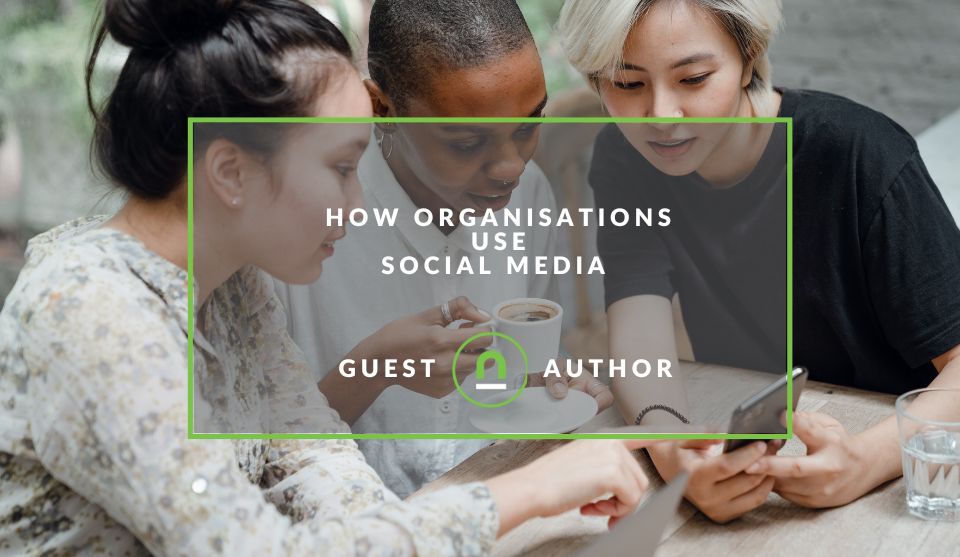Recent posts

Petrol heads
Why Load Bin Accessories Make Your Bakkie So Much Easier to Live With
26 November 2025

Alarming
What Is The Part Time Job WhatsApp Scam?
25 November 2025

Doctors Orders
How Data Has Changed The Healthcare Sector
24 November 2025

nichemarket Advice
Where Press Releases Live In An Age of AI
21 November 2025
Popular posts
Extravaganza
Trending Music Hashtags To Get Your Posts Noticed
24 August 2018
Geek Chic
How To Fix iPhone/iPad Only Charging In Certain Positions
05 July 2020
Extravaganza
Trending Wedding Hashtags To Get Your Posts Noticed
18 September 2018
Money Talks
How To Find Coupons & Vouchers Online In South Africa
28 March 2019
How Organisations Use Social Media
17 August 2022 | 0 comments | Posted by Monica Geller in Industry Experts
Businesses have been significantly impacted by social media. Platforms like Twitter, YouTube, and Facebook are not only used to advertise new items and promote brands, but they also work well as channels for customer support and conflict resolution.
Even though a small business owner may not always need a dedicated social media team, certain employees should be knowledgeable about selecting and utilising one or more platforms. These team sizes also need to be adaptable enough to reconcile chores linked to the 24/7 nature of online culture with obligations related to offline work.
Social media branding is crucial
Social media and business combine to offer many businesses unmatched branding opportunities. Through social media profiles, content sharing, and platform-based advertising, both established and emerging brands can build or redefine themselves online. Many businesses have recently relied heavily on social media posts and advertisements to grow their fan bases and sales.
Profiles
The first step in establishing a social presence is to create a profile. Across platforms, business profiles vary but often include a firm name and logo, information about the sector in which the business operates and its practices, and basic contact details like a website and phone number. Businesses occasionally list their operating hours as well.
Sharing high-quality material that builds a brand, offers much-needed information or amusement, and establishes a business's credibility is the key to success on social media. Depending on the platform, different content types are exchanged, but often images, videos, and links to publications in the industry are included.
Advertising
The majority of social media networks give users the option to purchase advertisements. While not all businesses choose to buy advertisements, many have done so with tremendous success.
Influencers
A lot of bloggers, podcasters, and video creators decide to concentrate on specialised niche interests when creating their material. Many of these producers get to prominence in particular industries not because they have previous work experience but because of how popular their content is. Companies regularly seek after these "influencers" to advertise their products.
The standard arrangement between a company and an influencer entails the influencer receiving free or significantly reduced goods in exchange for a favourable online review or other product promotion. This might seem like a brief review in a video or blog post, or it might involve promoting the product brand while wearing or using the item in question.
Sharing content in a small business context
SparkleStars, a brand-new manufacturer of mineral-based cosmetics, is owned by Sharon. Sharon launches a thorough social media content-sharing campaign with the assistance of her head of marketing.
Every day, Sharon and her colleagues scoured the internet and news sources for stories that might interest SparkleStars' current and prospective clients. Because Sharon has done some market research, she is aware that her customers care about the environment, taking care of themselves, and, at least in certain circumstances, avoiding irritating skin products.
The SparkleStars team is cautious to blend self-promotional information with that from other sources when sharing its own brand's content, such as blog entries, announcements of new goods, product demonstration videos, and recent media mentions. In actuality, the group has decided to provide four pieces of outside content for each item of SparkleStars' content.
The marketing team adds relevant hashtags that identify the subject matter to every piece of shared content. Additionally, the marketing team, whenever feasible, includes the username of the person or business that is mentioned in the material so that they are informed when it has been shared.
SparkleStars started to receive "likes" and other types of attention from the companies and people it featured in its material over time. As a result, SparklesStars gained more credibility and notoriety.
Web-based customer support
An entirely new customer care channel has emerged, thanks to social media. Prior to recently, customers had to typically contact firms via phone, email, or website-based chat in order to voice complaints or request assistance with their products. However, some businesses have specialised social media customer care groups that focus on responding to issues and complaints from clients on certain platforms.
After dissatisfied consumers started complaining on social media when other routes didn't work, it was decided to offer social media-based customer service. It seemed logical to address issues openly so that other platform users could view the correspondence because these "callouts" sometimes caused humiliation for businesses.
Improve communication skills
Businesses have undergone a significant paradigm shift as a result of the move toward customer support via social media, chat, and email. In the past, telephone customer support was frequently available. Customer support workers needed to be proficient writers as email became widely available.
Strong written communication skills are now more important than ever for people working in customer service roles on social media platforms where communications are taking place.
Human resources and recruiting
Social networking is a popular tool used by hiring managers, recruiters, and human resources specialists for finding and screening job candidates. A hiring manager can learn more about a job applicant's character, interests, and personality by looking through her social media sites if they are not personally familiar with her.
In some circumstances, a hiring manager can have a better grasp of an applicant's skill through social media research. A hiring manager may feel more confident in the candidate's knowledge and professionalism if, for instance, the applicant looks to have great writing skills and frequently distributes articles pertaining to the business with insightful comments.
Example of a small business hiring
A small software company owned by Darren makes a personal-style app. In order to give app users fashion advice, he is trying to engage a group of personal stylists. He receives a flood of email answers after posting a job ad.
Darren has his pick of employees thanks to the overwhelming response, but he's also concerned about picking the best looks for his company. He starts by looking up the social media accounts of his most qualified candidates. He observes that several of the candidates have a distinctive style in the photos that have been uploaded on their social media profiles.
He also observes that three candidates, in particular, have created expertly curated fashion boards on Pinterest. He understands that these people have a good fashion sense and ought to be able to recognise items that will appeal to their internet clientele. Darren sets up interviews and ultimately decides to add all three to his new squad.
Monitoring worker behaviour
Some human resources departments keep an eye on current employees' conduct on social media. Even though it may be controversial, this strategy may be helpful when employers and employees are at odds. Human resources can take action over a worker's absence, for instance, if the employee reports being ill and unable to work, but social media images clearly show him out and about.
The practice of some firms of terminating or otherwise punishing employees for things that employees have stated online is a further source of debate. When employees post racist, sexist, or violent remarks online, businesses have the right to fire them.
This could be done for brand protection purposes, but it could also be a precaution performed to safeguard the working environment. For instance, racist employees might foster a hostile work environment, and threatening individuals might pose a danger to other employees' physical safety.
Tell us your story
Would you like to write for nichemarket just like Monica has? Find out how to submit a guest post and when you're ready, you can contact us.
Contact us
If you would like us to improve the advertising for your site or want to know more about digital marketing for your business, then don’t be shy we’re happy to assist. Simply contact us
Are you looking to promote your business?
South African Business owners can create your free business listing on nichemarket. The more information you provide about your business, the easier it will be for your customers to find you online. Registering with nichemarket is easy; all you will need to do is head over to our sign-up form and follow the instructions.
If you require a more detailed guide on how to create your profile or your listing, then we highly recommend you check out the following articles.
Recommended reading
If you enjoyed this post and have a little extra time to dive deeper down the rabbit hole, why not check out the following posts on social media.
- Social Media Tips for Food & Beverage Entrepreneurs
- 7 Key Methods For Finding Trending Topics With Social Media
- 6 Reasons You Should Follow Your Competitors On Social Media
- 5 Reasons Why Your Business Needs A Social Media Strategy
- How To Write Social Media Captions that Spark Engagement
- 7 Foolproof Steps To Approaching Companies On Social Media In 2020
- How is social media good for you and your business?
- 10 Social Media Ideas For Small Businesses
You might also like
Grow Your Practice With SEO - Physio's Guide To Marketing
28 October 2025
Posted by Nathan Meyer in Doctors Orders
Grow your physio practice with SEO, including advice on building locally relevant pages and optimisations to attract more real-world customers. Read ...
Read moreWhere Press Releases Live In An Age of AI
21 November 2025
Posted by Che Kohler in nichemarket Advice
How the press release landscape will be affected by the move to AI overviews in search, users moving to LLMs for information and AI summary tools on ...
Read more{{comment.sUserName}}
{{comment.iDayLastEdit}} day ago
{{comment.iDayLastEdit}} days ago
 {{blogcategory.sCategoryName}}
{{blogcategory.sCategoryName}}

